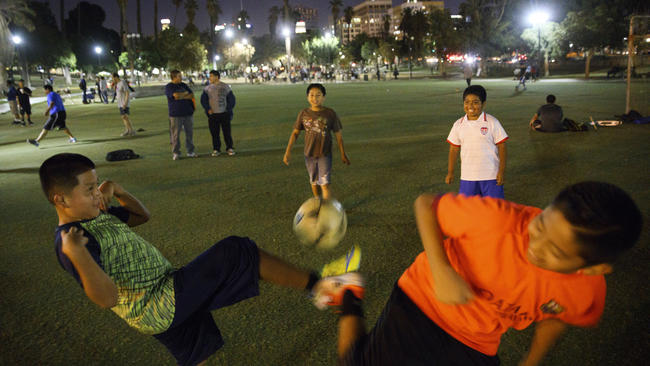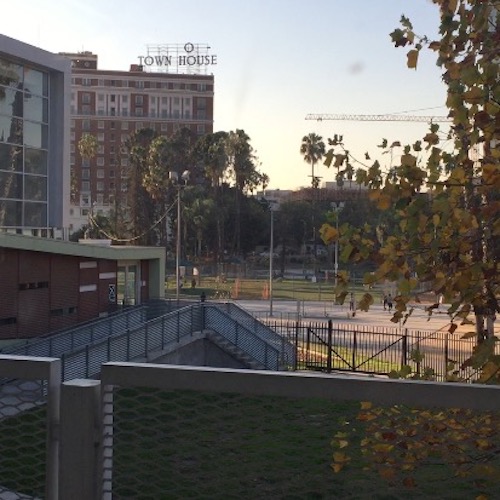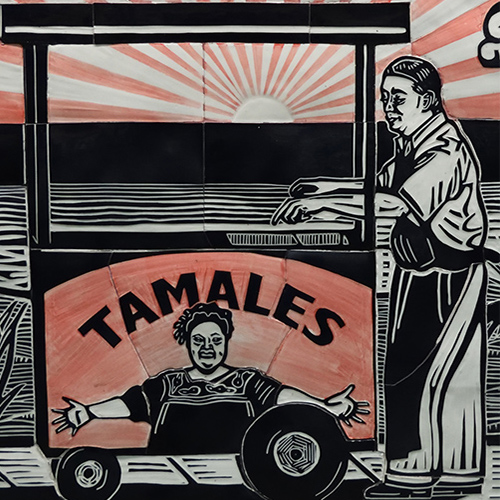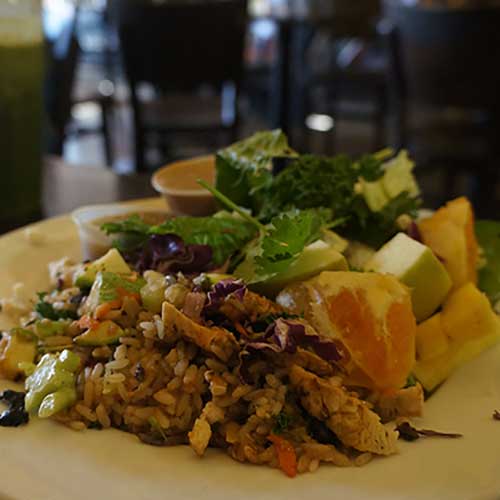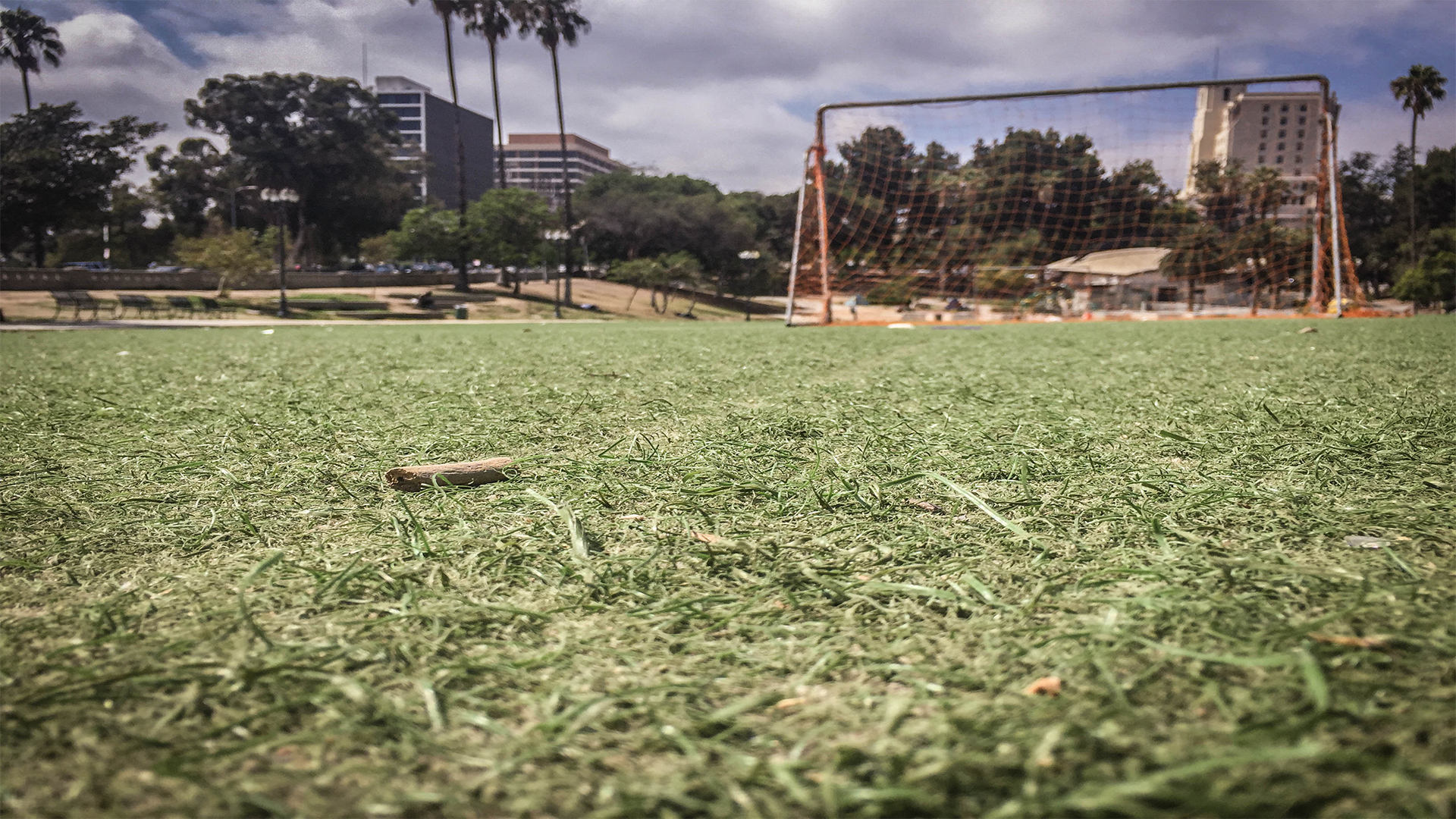
Finding Sport
Westlake's search for a place to play.
When Mario Batz won a contest at a celebratory festival in his home country of Guatemala, he uprooted and moved to Los Angeles. Batz settled in Westlake, where he started his new life. He was an avid soccer fan, and loved playing the game; he played all the time in his home country. So when he moved to Westlake, he was shocked to find himself struggling to play. The problem was that there was nowhere to play.
“When I came in 1991, there wasn’t a field here. [The only field] was a dirt patch, and playing was chaos: there were no rules,” says Batz.
Today, 15 years later, not much has changed. Many Westlake residents are struggling to find places to participate in sports and other recreational activities.
“There are a lot of people in this community who are looking for places to play soccer,” says Batz.
Westlake is an urban neighborhood, with the second-highest population density in Los Angeles. There is a lack of open spaces, parks, and fields for the community to gather and participate in recreational sports. And the places in Westlake where the community could play are either unsafe or access is heavily limited by city regulations.
In the middle of this overcrowded neighborhood, MacArthur Park offers something unique: 32 acres of open space to gather and play—or litter, deal drugs, sell fake IDs, gamble, and live.
Unfortunately for Westlake residents, the latter is the more popular choice. Westlake is desperately in need of space that allows people to let loose and play; and the one place designed to give residents that opportunity, is too dirty and too dangerous. Criminals and drug addicts have hijacked the park from the people, and it has become overrun by the homeless.

In 2008, the city made an effort to provide sports and recreation opportunities for Westlake. The city financed a $2.5 million cleanup and renovation of the park—installing an artificial turf soccer field, stadium lights, and a playground for children. But within just a few weeks, criminals and the homeless had stolen it back from the neighborhood, making the new facilities effectively useless.
In an article about the state of the park, the Los Angeles Times told the story of a 33-year old mother who lives just a few blocks from the park. The Times writes:
Veronica Jarquin likes to visit MacArthur Park every few days and let her 3-year-old run free on the playground. On a recent morning, a man was smoking weed by the slide so they had to skip it and turn back home. In the six years Jarquin, 33, has lived a few blocks from the park, she’s learned to tolerate the troubles that have long plagued this place. She holds her breath when the grass reeks of urine. She keeps her distance when police are making an arrest. She never goes near the yelling homeless men or their tents on Wilshire Boulevard.
The story of Jarquin told by the LA Times perfectly illustrates the grave problems with MacArthur Park's current state.
Other than the park, the only other option for the people of Westlake to enjoy sports and recreation in their neighborhood is to use one of the local high school’s facilities. Westlake is home to three major high schools—Roybal, Belmont, and Contreras—all with sufficient field space and gyms.
“I get calls all the time from people in the community who want to use the track, want to use the weight room because it’s an urban neighborhood and there’s not a lot of open space, like parks, and so forth,” says Neil La Sala, Belmont High School’s athletic director.
However, public access to these ideal facilities is strictly limited.
“The thing of it is, LA Unified does not allow facility use unless it’s by permit. So I have to turn them down,” La Sala adds.
The Los Angeles Unified School district limits access to high school athletic facilities to only organized leagues that have acquired a permit from the district. Obtaining these permits is arduous, and the district demands an abundance of requirements, such as proof of insurance and proper supervision. In a low-income neighborhood, these requirements are difficult for many leagues to provide. As a result, few sports leagues exist in the neighborhood outside of the high schools.
“It’s tough to get this field space,” La Sala says.
One of the consequences of this strict limit for public access is some people in the community break into the facilities and trespass. The tall chain-link fences surrounding schools’ facilities, like at Belmont, often have to repair cut wires and pulled apart fences, especially after the weekends. La Sala went as far to call in the district welders to come out and put additional metal bars in the fences intended to counter the trespassers’ strategies—but even that was unsuccessful.
“I thought I was smart and I had the district welders come out and put in this extra piece to prevent this from happening. But it doesn’t matter what we do, they find a way in,” La Sala explained.
The lack of sports leagues exists at both the youth and adult levels. In Westlake, high school is the only true opportunity available within the neighborhood to participate in sports. Not before, and not after.
“When we get student athletes, we’re starting from square one. There are no real youth leagues that feed into us,” says La Sala.
He explains that the few students who do have prior experience travel to other areas like East Los Angeles to play on the weekends. However, that’s rare.
“For our kids to have any kind of experience before high school is more the exception than the rule,” he says.
The problem is even worse for adults.
“The city focuses on kids from ages five to 18, and the older people are ignored,” says Batz.
After high school, residents in Westlake have limited opportunities to participate in sports. With the scarcity of space and facilities, and the small number of leagues able to obtain a permit, many adults who desire recreation are left empty handed.
Piling onto the problems in Westlake is gentrification. In the last decade, Westlake has experienced a huge wave of gentrification.
Referring to the lack of recreational opportunities in the area, La Sala says: “It didn’t used to be this way here until gentrification. Once that started, the problem really exploded.”
At the onset of the gentrification surge in Westlake, Miguel Contreras Learning Complex was born. Contreras was constructed to help combat the overpopulation of Belmont High School, which was becoming overcrowded as Westlake’s population grew with gentrification. However, the city needed significant room to build the school’s athletic complex—so they offered up Westlake’s lone YMCA soccer field as a sacrifice. One of the only places in the neighborhood for public recreation was replaced with a high school football stadium and a $160 million Olympic pool.
To make matters worse, the LA Department of Parks and Recreation and the LAUSD refused to open the state-of-the-art pool for public access for the first two summers after it was completed, igniting outrage in the park-poor community. When the district finally did open the pool to the public, they limited its access.
However, this case was an outlier in Westlake. (At least to the extent new projects took over field space, but not in terms of the city inhibiting residents’ access to recreational opportunities).
The primary impact of gentrification on recreational opportunity in Westlake was the influx of people it brought into the neighborhood, which has increased the amount of people in search for recreational space.
“From just my phone ringing and the emails I receive, it’s clear that a lot of the folks that are coming here want a place to workout and want leagues to join,” said La Sala.
Recently, property values in neighboring Koreatown and Downtown LA have begun to skyrocket. This has resulted in a flood of people from a socioeconomic group into Westlake that hasn’t lived in the area in decades, and mega-complexes beginning to pop-up all over. These complexes are lavish multi-purpose developments, with retail space and several hundred housing units.
To help combat Westlake’s recreation problem, these massive facilities come equipped with large gyms and recreational floors. While on paper this sounds like a step towards a solution, it only helps the new higher-income persons moving in, not the current low-income majority of Westlake who can’t afford these luxury gyms.
“I want to exercise, [but] I don’t want to go to the gym and pay [the] fees and restrictions,” said Westlake resident Irving Luna.
In spite of the many challenges and obstacles to finding viable space for recreation, Westlake is home to a few leagues that have been able to obtain these demanding permits.
A frustrated Mario Batz (the Guatemalan who arrived in 1991 unable to find somewhere to enjoy his favorite sport) took matters into his own hands. Believing it was important for adults in the community to have the opportunity to play soccer, Batz fought hard to obtain a permit from the district and start his own league.
Liga Centro American, the name of Batz’s league, has a permit allowing members to play under the lights of Erdmann Field at Belmont High School. The league meets on Friday and Saturday nights, and is open to anyone and everyone.
“My philosophy is anyone can play, no matter their race, age, gender, anyone can come play. We even have women’s teams,” explains Batz.
Most of the teams in Liga Centro American are comprised of family members and friends who have been playing together in the league for several years.
Unfortunately, Batz and his league aren’t the norm. Liga Centro American is just one of a small number of recreational leagues in Westlake.
The lack of space, strict city regulations, and unfavorable gentrification projects are withholding the Westlake community from the enjoyment of escaping the strains and pressures of everyday life, and simply just playing.
Despite being such a dense, overcrowded neighborhood, an enormous hole is somehow able to exist.
Mario Batz's Liga Centro American plays at Erdmann Field at Belmont High School in Westlake.
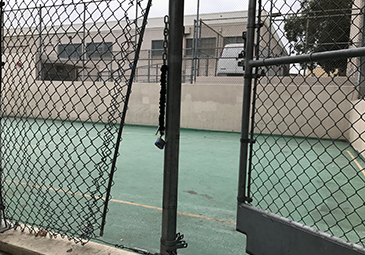
Trespassing at Westlake high schools
Some Westlake residents want a place to partake in recreational activities so badly, they're willing to break into high school facilities.
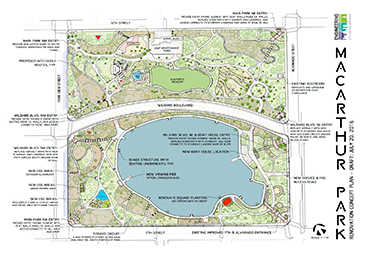
MacArthur Park renovation plans
City councilman Gil Cedillo is working on a $20 million renovation to MacArthur Park, which includes more recreational opportunities, such as workout equipment.
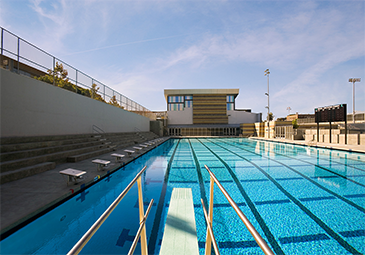
The Miguel Contreras Learning Complex pool
The $160 million Olympic pool built at Contreras High School in 2006 caused major controversy within the Westlake community.
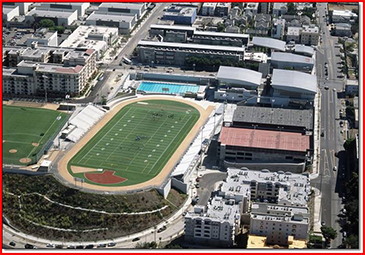
Miguel Contreras athletic complex
The Contreras High School athletic complex constructed in 2006 took the place of Westlake’s lone YMCA soccer field.
